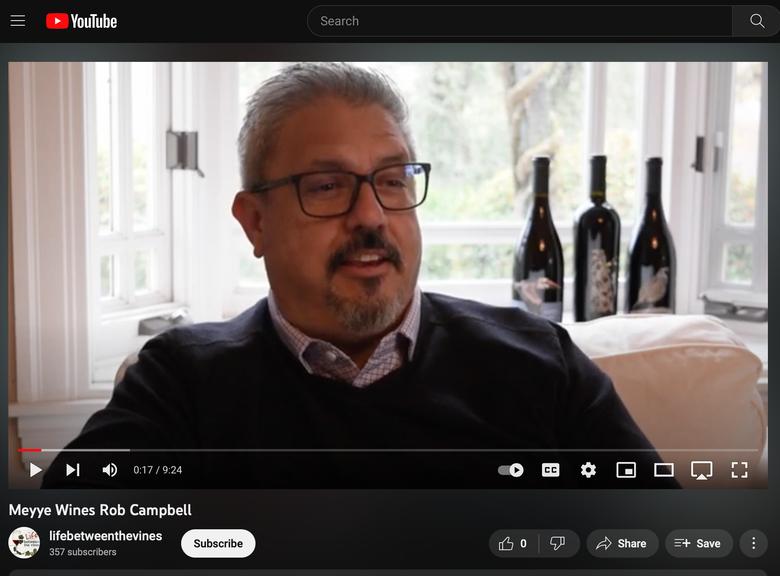
(Bird Calls)
So You Want to Plant a Vineyard, part I
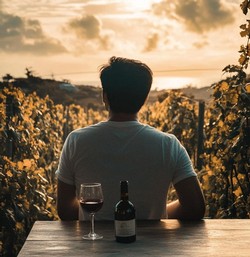 Have you ever wondered what it takes to plant a vineyard in Sonoma or Napa County? Have you sometimes thought of buying property in the wine county, planting a scenic vineyard below your house, and enjoying the sound of rustling grape leaves in the evening breeze while you watch the sun dip below the hills with a glass of wine in your hand? If that’s the case, we’ll spare you the expense ($$) and you can live vicariously through us for the next 2 years. We are in the process of designing and installing a 1.6-acre Pinot Noir vineyard on our new property in Sebastopol.
Have you ever wondered what it takes to plant a vineyard in Sonoma or Napa County? Have you sometimes thought of buying property in the wine county, planting a scenic vineyard below your house, and enjoying the sound of rustling grape leaves in the evening breeze while you watch the sun dip below the hills with a glass of wine in your hand? If that’s the case, we’ll spare you the expense ($$) and you can live vicariously through us for the next 2 years. We are in the process of designing and installing a 1.6-acre Pinot Noir vineyard on our new property in Sebastopol.
Find some land
I’ll leave the house project to another blog, but what does it take to plant a vineyard in Sonoma Co. First, you’ll need land. You’ll often hear the term “site, soil, clone” when talking to a winemaker or vineyard manager. This means, find a suitable planting site first (if you know what varietal you want to plant, then that will limit your search). You may have dreams of growing cabernet sauvignon, or chardonnay, or zinfandel—or maybe all three on your property. But before settling on a varietal, you need to know what varietal is best suited for your site. The three varietals I listed above require vastly different climates to thrive (cool-moderate-hot). In fact, it would be hard, if not impossible, to find a single site that could grow all three varietals extremely well. With that in mind your first goal is to find a site you can afford. For us, that turned out to be the Sebastopol Hills just west of Sebastopol, CA on the ‘Goldridge’ line. This soil is perfectly suited for pinot noir and has a very cool-to-temperate climate You may already own land or want to plant near your existing house. Find out what grows well in your area from local growers or if you have wineries in your area. If not, UC Davis has a soil database that will tell you what soil you have for any location in the US. From there you can ask a nursery or grapevine nursery what does well in your soil.
https://casoilresource.lawr.ucdavis.edu/gmap/
Permitting
You have the land, you have adequate soil (more on this in a bit), and you have an ample water supply (with new water restrictions, you cannot plant in areas deemed scarce for water). Congratulations! But now comes permitting before you even think about putting a vine in the ground. For winegrowing regions, like Sonoma and Napa, you’ll need a permit to plant your vineyard. In Sonoma Co. that’s anything larger than 0.5 acres. In Napa Co. it’s anything larger than 5.0 acres. In Sonoma Co. this requires both a Vineyard & Orchard Site Development (VESCO) permit and an Agricultural Grading & Drainage permit (Napa is similar but has diQerent names). But, before you can apply for these permits, you’ll need a few reports done first:
1. Biological Report – what plant and animal species are located at the site and any mitigation measures needed to either manage or co-exist with those species, especially threatened or endangered species. In Sonoma Co. it’s the dreaded Tiger Salamander. If they are around, you are not planting a vineyard!
2. Soils Report – what soil is on site? Is it toxic? Does it need mitigation (e.g. erosion control)? This will also tell you what you’ll need to do to the soil, if anything, for optimal growing conditions of grapevines.
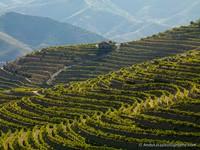 3. Civil Engineering report – is any grading, terracing, or drainage required? What are your irrigation requirements? Are there water restrictions, etc? If you are building a house, then you need the house grading and drainage done first before the vineyard. And if you think hillside vineyards look cool, think again, your price nearly triples if you need to terrace the land. Yikes!
3. Civil Engineering report – is any grading, terracing, or drainage required? What are your irrigation requirements? Are there water restrictions, etc? If you are building a house, then you need the house grading and drainage done first before the vineyard. And if you think hillside vineyards look cool, think again, your price nearly triples if you need to terrace the land. Yikes!
4. Proposed vineyard layout, how many vines, rootstock, and varietal.
Prices for these line items above can vary widely. For us, each line item was $3-4K.
Gather all your reports and head to your local Agricultural Planning office. If all goes well after 3-6 mos., you’ll have your VESCO and 5 years to complete your project. But what about bullet #4 above, how do you find out all that information? You hire a vineyard manager!
What kind of vineyard do you want?
When you hire or contract with a vineyard developer/manager, they will ask what your goals are and help you design a vineyard to meet those requirements. But how do you decide what you want? Let’s start with size.
Size
Acreage, or how much area you want to plant, is not the only factor to consider when designing a new vineyard. How many vines per acre and how much total acres feed into your equation for how much you want to spend and thus, how many tons of grapes you will harvest in the future. Vineyards are usually described in acreage, but the amount of vines/acre can vary widely due to spacing. A 5-acre vineyard can produce as little as 5 tons, or up to 45 tons! This is all due to plant density and growing site. Of course, the more plants, the more cost for baby grapevines, but it also means more steel posts, more wires for the canes to grow on, etc.
Layout – how big, how dense?
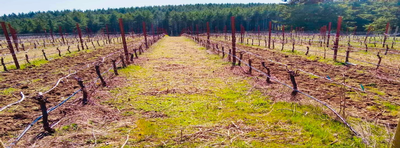 Vineyard spacing is typically the ‘open’ space between each row followed by how far apart each vine is from each other. By ‘open’ space I mean where a tractor drives between the rows or where you walk to view that sunset with your glass of wine. Vine spacing is the distance between each grapevine in each row. When you hear “8x6” this means 8’ ft. wide rows with the plants 6’ ft. apart. The most common plantings you’ll see are 8x6, which translates to 908 vines/acre and 8x5,1089 vines/acre. This is considered medium wide planting and typical for wine grapes used in premium wines. In today’s expensive growing areas where land price is astronomical (such as Napa Valley) you can see vineyards as dense as 4’x3’. A 4x3 vineyard supports 3,620 vines per acre! Because the rows are so close, traditional tractors cannot be used further increasing your cost to farm. With 3X more vines/acre you would think, the more the better. But with plants that close, it requires a significant amount of watering, fertilizer/supplements, hedging and pruning (labor/tractor time) to keep canopy from becoming too dense. Even with the best farming practices, your fruit quality will suffer due to over-competition between the plants for sufficient nutrients. On the flip side with larger spacing, the plants don’t need to compete for nutrients as much (if at all), especially if planted on fertile soil, and less water is required to the point that you can employ ‘deficit watering’ or in the extreme, dry-farm (no irrigation) practices. In deficit watering, you only water the plants when absolutely needed to maintain target crop loads. This forces the vines to dig deep for water and tap into any shallow water tables. Paired with sustainable/regenerative farming practices such as cover crops on rows, minimal till/discing, cover grasses between vines, etc. you get the best of both worlds – good crop tonnage and high-quality fruit. The target crop load for premium wine is ~3 tons/ace. In 4x3 spacing their targets are closer to 8-9 tons/acre!
Vineyard spacing is typically the ‘open’ space between each row followed by how far apart each vine is from each other. By ‘open’ space I mean where a tractor drives between the rows or where you walk to view that sunset with your glass of wine. Vine spacing is the distance between each grapevine in each row. When you hear “8x6” this means 8’ ft. wide rows with the plants 6’ ft. apart. The most common plantings you’ll see are 8x6, which translates to 908 vines/acre and 8x5,1089 vines/acre. This is considered medium wide planting and typical for wine grapes used in premium wines. In today’s expensive growing areas where land price is astronomical (such as Napa Valley) you can see vineyards as dense as 4’x3’. A 4x3 vineyard supports 3,620 vines per acre! Because the rows are so close, traditional tractors cannot be used further increasing your cost to farm. With 3X more vines/acre you would think, the more the better. But with plants that close, it requires a significant amount of watering, fertilizer/supplements, hedging and pruning (labor/tractor time) to keep canopy from becoming too dense. Even with the best farming practices, your fruit quality will suffer due to over-competition between the plants for sufficient nutrients. On the flip side with larger spacing, the plants don’t need to compete for nutrients as much (if at all), especially if planted on fertile soil, and less water is required to the point that you can employ ‘deficit watering’ or in the extreme, dry-farm (no irrigation) practices. In deficit watering, you only water the plants when absolutely needed to maintain target crop loads. This forces the vines to dig deep for water and tap into any shallow water tables. Paired with sustainable/regenerative farming practices such as cover crops on rows, minimal till/discing, cover grasses between vines, etc. you get the best of both worlds – good crop tonnage and high-quality fruit. The target crop load for premium wine is ~3 tons/ace. In 4x3 spacing their targets are closer to 8-9 tons/acre!
Once you have your final vineyard layout and all your documents in hand, you submit your VESCO. Typically, it takes 4-6 months to receive final signoff after any revisions and final review by the county agricultural planner. Congratulations, you are ready to plant. But plant what? That’s in next month’s blog.
Is Wine Healthy?
How much wine per week is heathy?
If I had asked this question just a few years ago, most people would likely have responded that one glass of wine per day was relatively heathy and safe. Some would even say their doctor recommended a glass of wine per day to those patients who enjoy wine and are watching their heart health. But recently, the notion of wine as “healthy” has come under question. In fact, the headlines now read ‘Alcohol is not healthy in any amount.’
So where does that leave wine lovers like us? As I went down the rabbit hole of researching this topic I found some common threads:
1. There is a global neo-temperance movement with the goal to reduce or eliminate all alcohol consumption. This movement is rooted in healthy lifestyles, longevity, and elimination of the social ills related to alcohol abuse. Look at Orginasation of Good Templars (now known as Movendi International) and the Canadian Institute for Substance Use Research at the University of Victoria.
2. Most of the research used to denote the ill effects of alcohol abuse are rooted in just that—alcohol abuse. When you drill down into the data of moderate to light drinker studies (1-2 glasses of wine per day), especially wine, the data gets murkier and inconclusive. You see, moderate to light wine drinkers tend to already have healthy lifestyles when it comes to eating and exercise thus a better health status to start with. That leaves researchers, who have a deliberate bias on the ill effects of alcohol, to place a heavier emphasis on heavy drinkers to ‘tease out’ the ‘alcohol only’ effects on health. This is, at best, flawed science.
3. There are factual heathy chemical components to wine – especially polyphenols and a myriad of other antioxidant compounds that can lead to better health outcomes. Recent research into the gut microbiome has found red wine drinkers tend to have higher concentrations of ‘good’ bacteria as to their non-drinking research subjects when looking at this one difference in diet. Combine polyphenols and antioxidants along with the stress relieving aspect of a glass of wine after a tough day and merge all of that with the beneficial socialization effect of drinking (we tend to enjoy a glass of wine with others) and the result is something worth pursuing. Is this not a life well lived? Is this not ‘better’ health?
Of course, everyone has their own unique medical conditions and general health to consider when making a choice to have a glass of wine (not recommended if on morphine!). However, a general all-encompassing statement that any amount of alcohol is bad for you seems like a gross overgeneralization and ignores all the positives of sensible consumption of wine and millennia of lived experience around a healthy wine culture.
For an excellent current article on this topic, I suggest Esther Moblie’s recent article in the San Francisco Chronicle:
The U.S. could soon declare alcohol unsafe. The wine industry says the process is rigged (Aug. 13, 2024)
https://www.sfchronicle.com/food/wine/article/anti-alcohol-dietary-guidelines-19595032.php
Coming Home
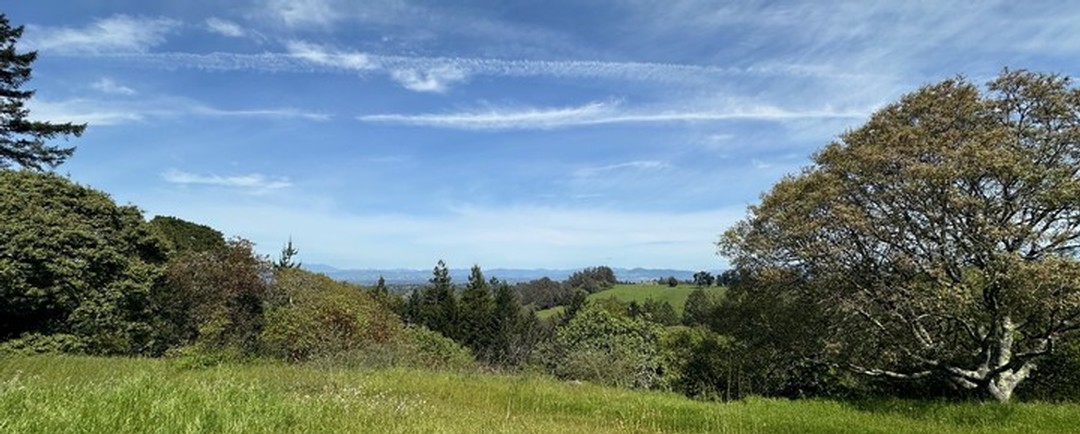
2024 has started out with a whole new future for Meyye. After looking for nearly 5 years, we’ve purchased a plot of land in Sebastopol for both our future home and our first estate vineyard. We are busy designing and applying for permits, hoping to break ground in 2025.
But why Sebastopol? My family has old ties there. In the last 150 years, my Coast Miwok ancestors including my Great Grandmother, my grandfather, my uncle, and two of my aunts were born in Sebastopol (formerly known as Analy). My grandparents were married there in 1924. But more importantly, our ancestors roamed these hills going back millennia. It was a powerful moment standing on top of ‘our’ hill, looking out over the view from Mt. St. Helena to Sonoma Mountain realizing that we acquired land that once belonged to my people. Call it an act of land re-possession after centuries of land dispossession.
Speaking of vineyards, this area of west Sebastopol enjoys an optimal blend of soil types and climate. This specific area (called English Hill on older maps) is part of a new proposed AVA called Sebastopol Hills (it is currently part of the Russian River AVA). With unique soil types of Goldridge, Los Osos, and Steinbeck the new AVA includes many top pinot noir producers and vineyards including Balletto, Litorai, and Halleck.

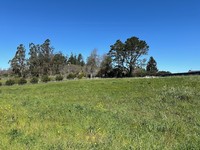 .
. 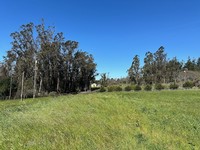
Lastly, my grandmother’s family (Southern Pomo) was from Jenner, just north of Bodega Bay. Growing up in San Francisco, we cherished our time by the ocean and on the beaches from Goat Rock down to Bodega Bay. On our first visit to the property, we were pleasantly surprised to find that we can see the ocean near Salmon Creek to the west. Not only does the coastal influence keep temperatures moderate so the grapes can have extended hang time and develop deep complex flavors, but I feel constantly reminded of my ancestors and a deep sense of belonging. Not only is it nice to be 20 minutes from Bodega Bay it’s also nice to be home.
Ka ‘ooni yommitto
(I’ve come home)
The Harvest That Would Not End
The 2023 Crush will go down in history as one of the best vintages in the past two decades. But why? It has mostly to do with the weather but also the way a wine grape matures.
Think back to the winter of 2022-2023 in Northern California. It was cold, wet, and long. We were still getting significant rain in March and April. The Placerville rain station, located near Story Winery (where Meyye wines are made and the source of our Zinfandel grapes), recorded 48” of rain for the year. That’s more than the previous 2 rain years combined! But it was the air temperature, and in turn, the ground temperature that kept the grapes from waking up.

Bud break - Mid May, yikes.
‘Bud burst’, the tiny little green leaves that pop out of the pruned back grapevine, typically occurs in late March to Early April for the Sierra Foothills (late February to mid-March for Sonoma Co.). This year, bud burst didn’t happen until early-to-mid May–over a month late. It takes about 120 days for a vine to bear fruit and mature for harvest in the Sierra Foothills (the shortest duration for all California viticulture areas by the way). With this in mind, we knew mid-late September would be the earliest we would pick our Zinfandel.
Then came the summer. While the rest of the world was literally on fire, California enjoyed one of the mildest summers on record. For us in the cellar, this was both a gift and a curse. The gift was temperate days to harvest in, crush in, work in, clean in, etc. This was a far cry from the crush of 2022 where we crushed fruit in 115° temperatures and endured weeks-long heat spells (over 103° each day) that not only spiked sugars in the fruit but was physically exhausting to work in. The curse for this year was delayed ripening. Grape vines prefer specific temperature ranges during the day and night. When the weather gets too hot or too cool, the vines slow down grape maturity. So, we waited, and waited, and waited…

August 14 – Veraison still not complete
We picked our Chardonnay from Carneros, our Pinot from Petaluma Gap, and our Mourvèdre (for Sokootok) from Amador County all in the same week of October 9th. These three grape varietals are usually picked across 6 weeks. We picked our last fruit lot, a zinfandel, on October 26th. This lot wasn’t even done fermenting until after Thanksgiving and pressed out in December! All totaled up, we were engaged in crush for 12 weeks. Last year, it was 4 weeks.

Crushing the pinot fruit (O'may) on October 9
While not ideal for winemakers, the extended time spent on the vine for the grapes resulted in one of the best vintages in decades. When people talk about grape quality they tend to focus on sugar and acid because these are simple indicators of grape maturity. Low sugar and high acid indicate a grape is not ready to pick. The right sugar (usually measured in degrees brix°) and the right acid (titratable acid measured by pH) indicate a grape is ripe. A typical target may be 24.5° brix with a pH of 3.5-3.6. But as we saw last year, a heat spike can throw off that balance. Drought can also throw off that balance (by dehydrating the grape) driving sugars up and acids down. But when a grape has a long growing season, the other compounds that makeup flavor, aroma, and color in wine get extra time to develop. Flavanols, as you can probably tell, make up the taste of wine. Descriptors like raspberries, strawberries, blueberries, blackberries, tea leaves, cola, etc. get more time to develop and in greater concentration. Anthocyanins are the color of the wine created by the grape during maturation. The longer the maturation, the more anthocyanins. And finally, tannins. Most people think tannins come from the barrels during the aging process. While partly true with new barrels or ‘once-fills’, neutral barrels (those used more than twice) do not impart any additional tannins. But tannins also come from the grapes, specifically from the skin and seeds. Tannins act as the wine’s natural preservative (along with the acid) to create beautiful color and structure that allows it to age long and graceful, like all Meyye wines. The result for 2023, ideal brix and acid at harvest with the greatest concentration of flavanols, anthocyanins, and tannins than we’ve had in decades. Can’t wait to enjoy these wines with all of you in 2026 and beyond!
Interview with Ray Fister and Life Between the Vines
'Oppun Towis Friends,
I'm going to be a little lazy this time around and just post a link to an interview I did in December, 2022 with Ray Fister and his excellent "Life Between the Vines" podcast. We talk about the history of Meyye as well as California's very first winemakers–spolier alert, it was not Franciscan monks.
Be sure to also check out his "Vino Lingo" series of interesting wine terms described by actual winemakers and why they use them. Facinating little gems of winemaking.
Cheers,
- Rob
Sokootok - what's with the name?
'Oppun towis friends,
You’ve seen the labels on our wines, the natural beauty of the birds, and maybe, made a subtle connection between the beauty of birds and the beauty of wine. But there is an origin story to every wine label and as such, I wanted to bring you the origin story of Sokootok (shoh-koh-tohk) our Rhone-style blend.
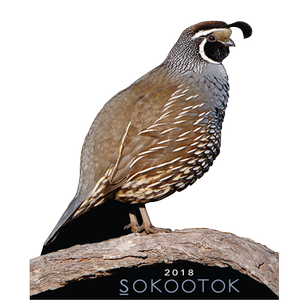 When I set out to make this wine in 2018, I had no idea what bird I was going to use. Meyye wasn’t even founded yet and I was still the owner/winemaker at Story Winery. Sokootok is a blend of five different wines, two of which are purpose-built for this wine: Grenache and Counoise (coon-wahz). The other three are Syrah, Petite Sirah, and Zinfandel (or Mouvedre). The blend is styled after the wines from Chateauneuf-de-Pape, which is both a region in France and a wine. Up to 17 different varietals can be used to create a Chateauneuf-de-Pape wine in France. This means there is great variation from producer to producer. After much enjoyable research, I settled on a Grenache-centered blend comprising at least 50% of the final product with the remaining percentages dominated by Syrah. Each wine lot is fermented and aged separately for the first year (the Grenache and Counoise are stored in stainless steel barrels). During the beginning of the second year, the wines are blended in varying percentages to achieve a consistency year to year. The blended wine is then returned to neutral oak barrels for additional aging and maturation.
When I set out to make this wine in 2018, I had no idea what bird I was going to use. Meyye wasn’t even founded yet and I was still the owner/winemaker at Story Winery. Sokootok is a blend of five different wines, two of which are purpose-built for this wine: Grenache and Counoise (coon-wahz). The other three are Syrah, Petite Sirah, and Zinfandel (or Mouvedre). The blend is styled after the wines from Chateauneuf-de-Pape, which is both a region in France and a wine. Up to 17 different varietals can be used to create a Chateauneuf-de-Pape wine in France. This means there is great variation from producer to producer. After much enjoyable research, I settled on a Grenache-centered blend comprising at least 50% of the final product with the remaining percentages dominated by Syrah. Each wine lot is fermented and aged separately for the first year (the Grenache and Counoise are stored in stainless steel barrels). During the beginning of the second year, the wines are blended in varying percentages to achieve a consistency year to year. The blended wine is then returned to neutral oak barrels for additional aging and maturation.
So, what does any of this have to do with the California Quail? It just so happens that Meyye, which means 'bird' in Coast Miwok, was coming into fruition. When it was time to decide on the second bird in the collection, it was an easy choice. The California Quail was my mom’s favorite bird. Meyye would not exist if it wasn’t for her. She was instrumental in resurrecting the Coast Miwok language through our tribal language program and her work inspired me to pay homage to my tribe and heritage with this brand. I owe a great debt of gratitude to her. Someone who inspired me, supported me (emotionally and financially), and literally gave birth to me. And so, I wanted to honor her by putting her favorite bird on the label. People told me I was crazy for putting an unpronounceable name on a label. But I didn’t care, I did it for Mom. So please join me in raising a glass to toast my mom, Joanne Campbell, who I miss each, and every day.
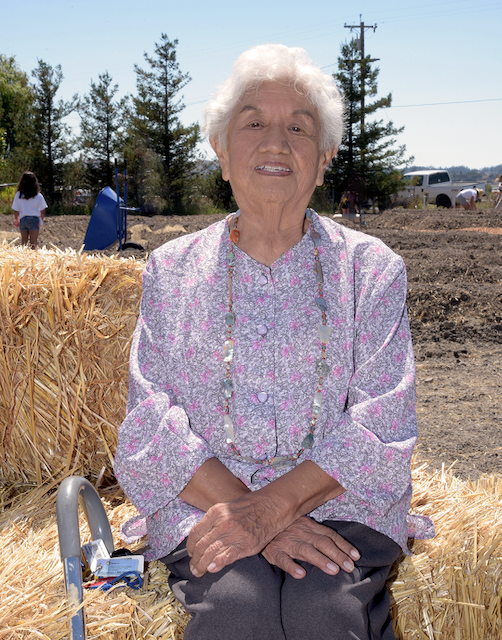
Finding Chardonnay's Roots
'Oppun Towis Friends,
When I was typing up the new tasting notes for our 2020 Kuluppis (koo-loo-pee) chardonnay, I realized I had no idea of the origin of the Robert Young clone (aka Clone 17). I knew it was named for the Robert Young Vineyard in Alexander Valley but not much beyond that. Soon, I was down a rabbit hole of chardonnay clones and the grape’s history and discovered a compelling story. (Thanks to Nancy Sweet, FPS Historian at UC Davis for her paper which I’ve borrowed heavily from here.)[1]
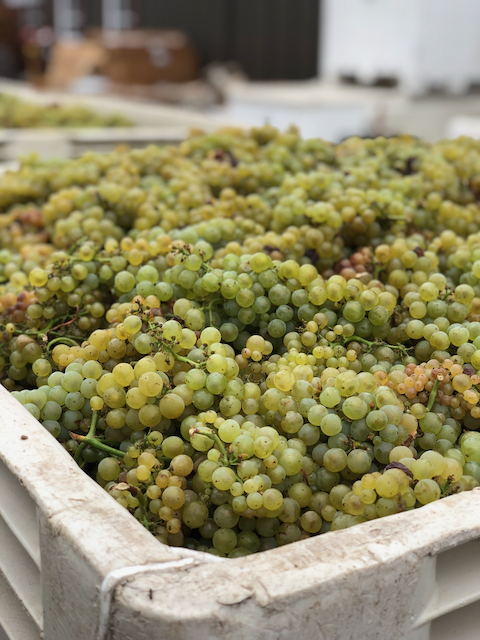 What we call chardonnay today started in the Mâconnais (Mac-o-nay) sub region of Burgundy, France (just north of the city of Lyon)[2]. The actual word ‘chardonnay’ today is a village in the Saône-et-Loire region of Burgundy and loosely translates from Latin as either (1) the name of a Roman landowner named Cardus who owned the village at the end of the Roman empire or (2) Cardonnacum the “place where thistles grow”[3] Tasty, huh? Chardonnay is just the French version of the Latin name. The grape is a cross of two different grape varietals–pinot noir and a near extinct variety called gouais (goo-WAY) blanc[4]. It’s theorized that the pinot grape’s thicker skin, yield, and resistance to rot (unlike gouais blanc) helped the grape grow well, produce ample juice (meaning more wine yield), and retain the fresh apple aromatics and taste of the gouais blanc grape, an ancient Roman varietal. This hybrid grape formed the foundation for white Burgundy starting in the 13th century with Cistercian monks of the Abbey of Cîteaux. As the wine got better, the local Duke of Bourgogne ceded more land to the church for more vines and more wine for his own fame and fortune. The rest is history–chardonnay became the dominant grape of white burgundies and remains so 1,000 years later.[5]
What we call chardonnay today started in the Mâconnais (Mac-o-nay) sub region of Burgundy, France (just north of the city of Lyon)[2]. The actual word ‘chardonnay’ today is a village in the Saône-et-Loire region of Burgundy and loosely translates from Latin as either (1) the name of a Roman landowner named Cardus who owned the village at the end of the Roman empire or (2) Cardonnacum the “place where thistles grow”[3] Tasty, huh? Chardonnay is just the French version of the Latin name. The grape is a cross of two different grape varietals–pinot noir and a near extinct variety called gouais (goo-WAY) blanc[4]. It’s theorized that the pinot grape’s thicker skin, yield, and resistance to rot (unlike gouais blanc) helped the grape grow well, produce ample juice (meaning more wine yield), and retain the fresh apple aromatics and taste of the gouais blanc grape, an ancient Roman varietal. This hybrid grape formed the foundation for white Burgundy starting in the 13th century with Cistercian monks of the Abbey of Cîteaux. As the wine got better, the local Duke of Bourgogne ceded more land to the church for more vines and more wine for his own fame and fortune. The rest is history–chardonnay became the dominant grape of white burgundies and remains so 1,000 years later.[5]
In California, the history is a little more mixed and recent. Chardonnay was first available from grapevine nurseries, mainly in Southern California, as early as the 1880’s (originally marketed as ‘Chardonai’ or confused with Pinot Blanc). Little was planted in the state in the late 19th and early 20th centuries as mostly experimental vineyards. Fortunately, some budwood was imported directly from France by Charles Wetmore, a California Agricultural Commissioner, and planted at his vineyard La Cresta Blanca in Pleasanton, CA during this time[6]. It wasn’t until well after prohibition was repealed that it started to be seriously planted in the Wente Bros. vineyards in Livermore, using budwood from Wetmore’s vineyard as well as new clones directly from France. The combination of all these different chardonnay clones became known collectively as the “Wente clone” and served as the basis for the California chardonnay viticultural industry. Continuing research by both winemakers and academics at UC Davis during the 1940s and 1950s found that the Wente clone could make exceptional wines, but in cooler climate terroirs[7]. And that is where the story begins with our chardonnay.
Robert Young was a prune farmer in Alexander Valley of Sonoma who turned his interest to grapes in the 1950s. At the urging of UC Davis, Carl Wente, and Young’s own love of white burgundies, he was given budwood from Wente in 1962 and planted them at his vineyards in Alexander Valley. Wente’s experiments with different chardonnay clone sources and lack of documentation ‘muddies the water’ as to what exact clone(s) he gave Young. Soon enough, Young discovered that the chardonnay grapes from Wente’s cuttings made exceptional wine, grew well, and produced good tonnage – perfect for a commercial vineyard. In 1982, he submitted samples of his budwood to UC Davis’ Foundation Plant Services (FPS) to classify it as its own clone. In 1987, Clone 17 was officially adopted (also called the Robert Young Clone) and thus allowed nurseries to start cultivating the clone to sell other growers [8] (with Robert Young Vineyards written approval of course).
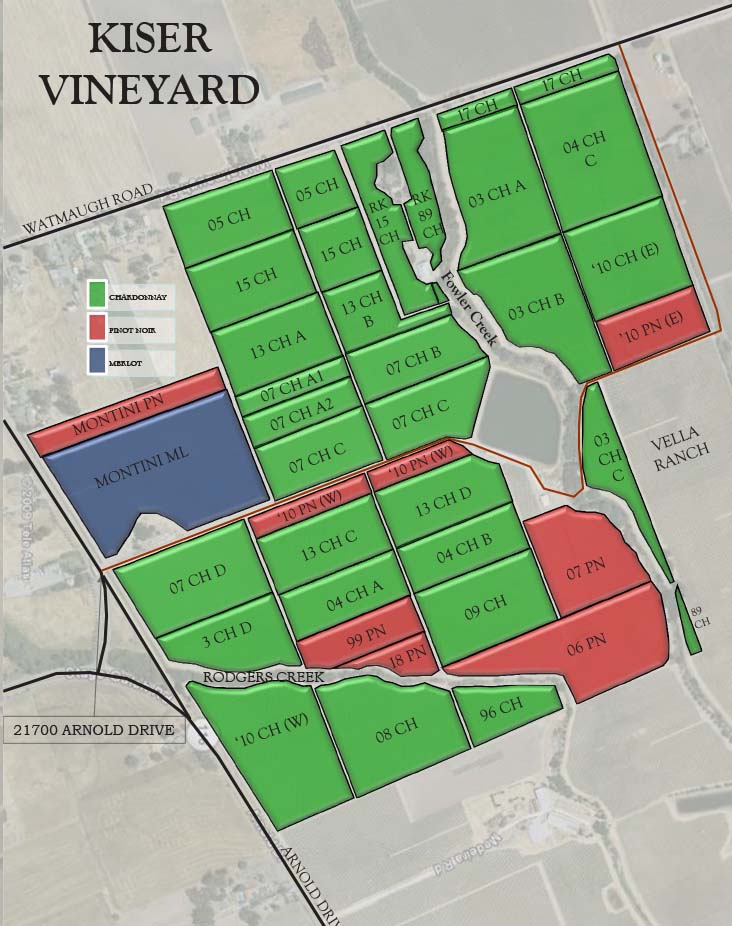
Our grapes come from the Sangiacomo Vineyards Kiser Vineyard location in Sonoma, CA (about 4 miles west from the Plaza at the center of town). Our block is labeled 07 CH C on the map and was planted in 2007. The Robert Young clone is one of 20 clones grown at the site[9]. We feel the clone, on this site, produces a beautiful fruit profile of ripe apples and pears. We age the chardonnay for 10 months in oak (about 40% new), sur lee (keeping the wine on the used yeast cells from fermentation), and frequently stir the contents every 3 weeks. This combination results in a rich, creamy, chardonnay with plenty of fruit and a long, lingering finish.
As you enjoy this 100% Robert Young chardonnay clone, think back to the journey those vines had. From 13th century Cistercian monks to early California grape nurseries and Wetmore, to the forethought of the Wente and Young families, to UC Davis, and especially to the Sangiacomo family for growing exceptional fruit year in and year out—the source of this delicious wine.
Cheers,
- Rob
Footnotes for more insight, all great reads.
[1] Chardonnay Flourishes in California; https://fps.ucdavis.edu/grapebook/winebook.cfm?chap=Chardonnay
[2] Harold P. Olmo. Chardonnay, an ampelography prepared for the Wine Advisory Board, San Francisco, California, 1971.
[3] The Demystified Vine: https://demystifiedvine.com/2013/10/25/an-inquiry-into-the-etymology-of-grape-varietal-names/
[4] DNA Fingerprinting Reveals Surprise in Wine-grape Family Tree; https://www.ucdavis.edu/news/dna-fingerprinting-reveals-surprise-wine-grape-family-tree
[5] From 5th to 15th C.: wines made by monks and trumpeted by the Dukes of Bourgogne across Europe. https://www.bourgogne-wines.com/our-expertise/a-story-of-time/the-contribution-of-the-monks-and-dukes-of-bourgogne/from-5th-to-15th-c.-wines-made-by-monks-and-trumpeted-by-the-dukes-of-bourgogne-across-europe,2517,9387.html
[6] Chardonnay Flourishes in California, https://fps.ucdavis.edu/grapebook/winebook.cfm?chap=Chardonnay
[7] Chardonnay Flourishes in California, https://fps.ucdavis.edu/grapebook/winebook.cfm?chap=Chardonnay
[8] Chardonnay Flourishes in California, Other California Clones, Robert Young Clone, Clone 17, https://fps.ucdavis.edu/grapebook/winebook.cfm?chap=Chardonnay
[9] Sangiacomo Vineyards, Kiser Ranch Map. https://sangiacomo-vineyards.com/vineyards/kiser/
Coming out of the Fog
Oppun Towis Friends,
As this Spring approaches, it finally feels like we are emerging from the hazy fog of COVID and things are starting to feel like normal. During the past two years we remained busy in the cellar creating our newest wine, a Pinot Noir from the Petaluma Gap AVA of Sonoma County called ‘Omay. You’re probably full of questions…A pinot? Petaluma Gap? And, why is it called ‘Omay? So, let’s explore all those questions together.
Why a Pinot?
Simple…because me and Tina really love pinots. As a winemaker, I wanted to take on the challenge of working with the ‘diva’ of the wine grape industry. After consulting with many winemaking friends and reading everything I could about pinot production, I realized why it’s such a diva. Think handling the fruit with kitten gloves, meticulously managing the pre-soak fermentation, the right yeast for fermentatio, and sourcing the best possible oak you can—all the while thinking “DON’T SCREW IT UP”. But honestly, it all starts with the fruit.
Why Petaluma Gap AVA?
When setting out to make a pinot, I wanted a specific clone for my first pinot—one of the original pinot clones from Burgundy called Pommard. And, I wanted it from Sonoma Carneros. Carneros Pommard fruit was hard to come by in 2019 so I was introduced to the recently designated Petaluma Gap AVA by my friend Mike Sangiacomo who’s family farms roughly 1,300 acres throughout the entirety of Sonoma County. The Petaluma Gap AVA is in the southern end of Sonoma County (see map below)
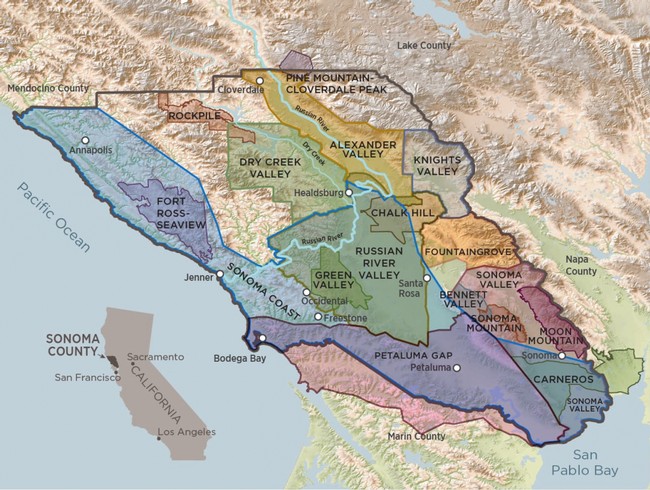
Map courtesy of sonomawine.com
This specific vineyard location, Robert’s Road, is part of Sangiacomo Vineyards and is located at the north-east corner of the AVA at the base of Sonoma Mountain in an ancient river wash basin. One of the advantages of this region is that you get the best of two worlds – the earthiness of the Russian River Valley AVA and the fully ripe fruit characteristics of Sonoma-Carneros. It enjoys regular afternoon breezes coming over the hills from the ocean but is far enough inland to have the heat to fully ripen. This fruit is meticulously grown and sourced by many prestigious Pinot houses. I felt lucky to even have access to fruit from this vineyard. Aged for 14 months in 40% new French oak, I feel this wine really represents what Sonoma County pinot is all about.
Why is it called ‘Omay?
‘Omay (oh-may) is the Coast Miwok word for the Brown Pelican. When thinking about a bird for this wine I wanted to use a coastal bird. My native Californian family descends from the original inhabitants of Sonoma. Whether at the coast near Jenner, or the villages at Tolay Lake near the top of the Bay (which happens to be the picture on the Meyye home page), I wanted a bird that my family identifies with and the good tidings that pelicans bring. Their majestic flight, their presence indicating fish are running, and those flight formations of a dozen giant birds flying inches from the surface of the ocean always bring a smile and a sense of awe as they fly by.
We hope you bring some of this wine into your house and share with your best friends and family.
Rob & Tina
Preparing to Launch
Oppun' towis! (opun tow-ish) / Hello, how are you!
Welcome to the new Meyye Wines website. This will be your portal into all things Meyye and the way to access your allocation. I know you're eager to get the wine. And, we are eager to get it to you! But, what have we been up too...
It's been a crazy year. Last year, our family sold Story Winery on Aug 1, 2019 but I remained as the winemaker for Story Winery. After a hectic transition (we quadrupled (4X) our production at Story) we took a well deserved break during the holidays and started to plan a big kickoff event for Meyye in the sping. Then the COVID-19 pandameic hit.
So, while everything in the world has changed, we silently release our new brand, Meyye ('bird' in Miwok). Meyye is an allocation only brand, meaning there will be no tasting room, the wine will not be sold in stores and will be produced on a micro scale–an overall production of 500 cases a year of just four wines.
What will the wines be? Zinfandel, chardonnay, pinot noir, and a red wine blend done in the tradition of Chateauneuf-de-Pape. The first allocation, our 2014 Zinfandel will be ready for allocation soon. Meyye wines all go through exacting aging regimes, bottled, then aged for additional years. This ensures that when you recieve the wine it is ready to drink but will also age quite well for years to come.
We encourage you to roam around the new website and familiarize yourself with where things are located (and maybe learn some new Coast Miwok words).
Thank you again for your support and allowing me to exercise my passion and vision in the pursuit of making equisite wine for my friends and family.
Towis hii
(Have a good day)
- Rob
